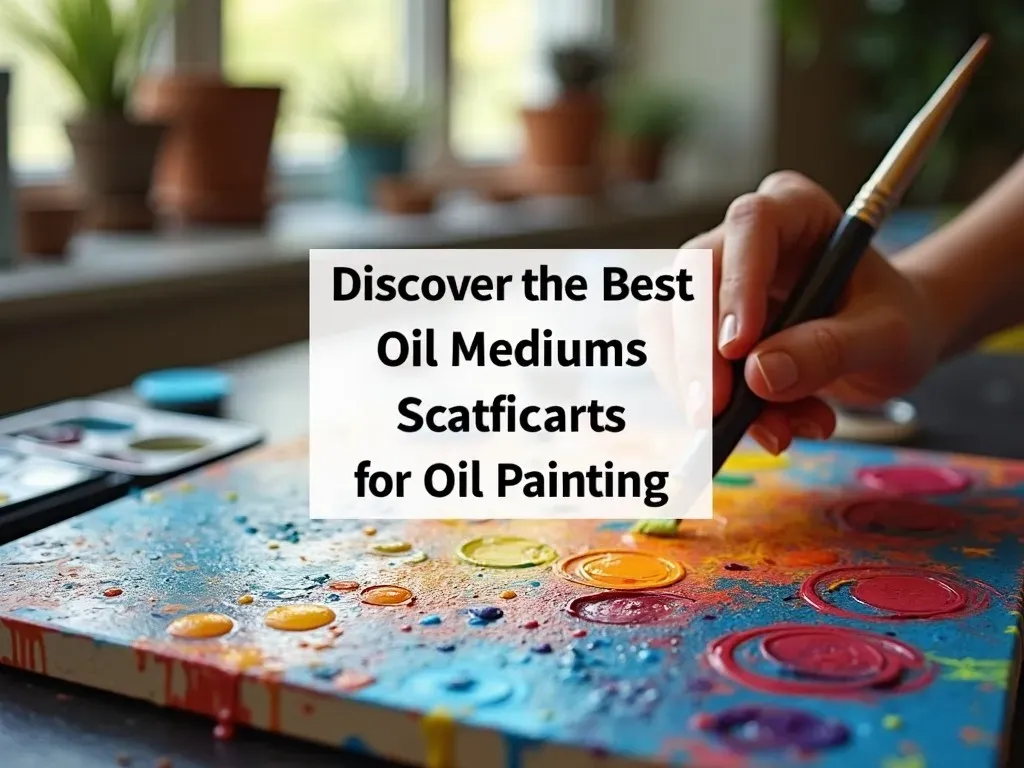Oil mediums for oil painting are a crucial component in the artist’s toolkit. They not only manipulate the texture and flow of the paint but also impact drying times and the final appearance of the artwork. Whether you are a beginner or an experienced painter, understanding oil mediums can enhance your creative process and the quality of your work. This article provides an exhaustive look at various oil painting mediums, their uses, recipes, and answers to common FAQs, all designed to help you master oil painting.
Types of Oil Mediums
Oil painting mediums can be broadly categorized based on their ingredients and properties. Below is a table summarizing some of the most commonly used oil mediums in oil painting:
| Medium | Base Ingredient | Properties | Ideal Use |
|---|---|---|---|
| Linseed Oil | Flaxseed | Slow drying, enhances vibrancy, adds gloss | Base layers, mixing |
| Walnut Oil | Walnut | Good flow, slow drying, reduces yellowing | Glazing, detailed work |
| Stand Oil | Refined Linseed Oil | Thick consistency, smooth finish | Final layers, fine details |
| Safflower Oil | Safflower | Light-colored, slow drying, good for pale colors | Light color paintings |
| Damar Varnish | Natural resin | Glossy finish, fast drying | Glazing, final varnish in artworks |
| Odorless Mineral Spirits | Solvent | Reduces viscosity, speeds up drying | Cleaning brushes, thinning paint |
Addressing Common Concerns with Oil Mediums
Oil painting can be daunting due to the myriad choices available for mediums. Common concerns include:
-
Drying Time: Some artists gravitate towards linseed oil for its slow drying time, allowing extensive blending and layering. In contrast, mediums like damar varnish dry quickly but require careful application to avoid unwanted drips.
-
Color Shift: The impact of oil mediums on the final color of an artwork is significant. For instance, some oils, like linseed, can yellow over time, while walnut oil maintains a more stable color.
Facts about drying times show that linseed oil can take up to 3-5 days to dry, whereas walnut oil may dry in 2-4 days under optimal conditions.
Recipes for Custom Oil Mediums
Creating your own oil mediums can be a fun and creative endeavor. Here are some recipes commonly used among artists:
-
Lean Medium:
- 2 parts Linseed Oil
- 1 part Odorless Mineral Spirits
- Use: Ideal for initial layers, improves paint flow.
-
Fat Medium:
- 1 part Stand Oil
- 1 part Linseed Oil
- Use: Great for final layers, enhances gloss and depth.
-
Glaze Medium:
- 1 part Damar Varnish
- 1 part Stand Oil
- 1 part Turpentine
- Use: Adds a translucent layer and enhances luminosity.
Application Techniques
Understanding how to apply oil mediums effectively can drastically affect your painting style. For instance:
-
Glazing: This technique involves applying multiple thin, transparent layers using a glaze medium. It adds depth and complexity to the colors without heavy texture.
-
Impasto: When using thicker mediums like stand oil, artists can create bold, textured strokes that enhance the painting’s dimensional quality.
-
Blending: To achieve soft transitions, mixing linseed oil into your paint can improve flow and allow for gradual blending of colors.
Frequently Asked Questions (FAQ)
What is the best oil painting medium for beginners?
For beginners, linseed oil is often recommended due to its availability and versatility. It helps in achieving a consistent texture and promotes vibrant colors.
How do I store oil mediums?
Keeping oil mediums in a cool, dark place will help to prolong their shelf life. It’s advisable to store walnut oil in the refrigerator to prevent rancidity.
Can I mix different oil mediums?
Yes, mixing oil mediums can yield unique results. However, it’s crucial to test the combinations on a sample canvas before using them in a final piece.
How do oil mediums affect drying times?
Oil mediums can significantly alter the drying time of oil paints. Faster drying mediums will accelerate the process, while slower mediums, like linseed oil, allow for more work before the paint hardens.
Are there any health risks associated with oil mediums?
Yes, some oil mediums can release harmful solvents. It’s important to use them in a well-ventilated area and wear gloves to avoid skin irritation.
Conclusion (removed)
Understanding oil mediums for oil painting is essential for both the novice and seasoned artist. By learning how each medium impacts the drying time, texture, and color of your oil paints, you can better enjoy the process of creating art. For more information, be sure to check out the Jackson’s Art Blog for additional insights into how these mediums work and can be integrated into your artwork.
Don’t forget to experiment and find the perfect mediums that resonate with your artistic style! Every stroke can lead to a new discovery. Happy painting!
